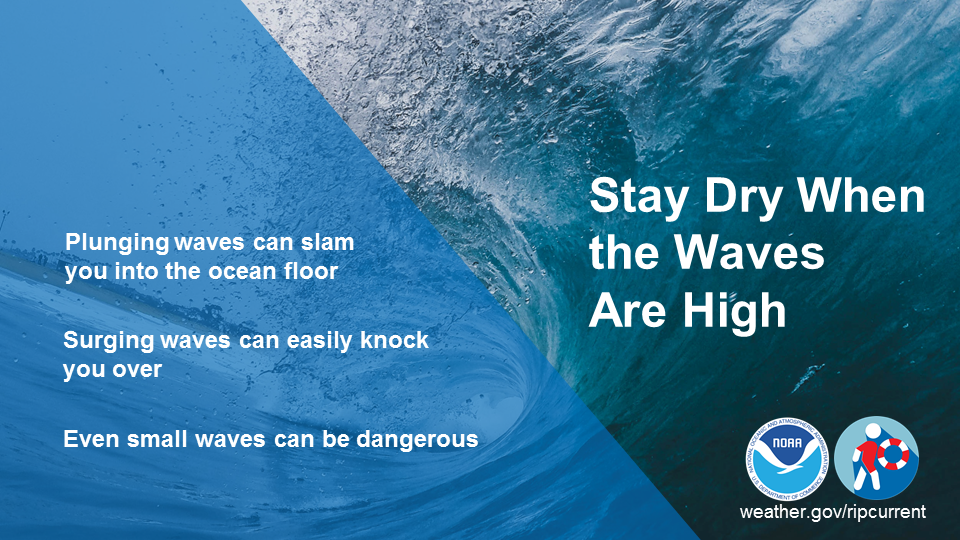

Shorebreak – waves which quickly peak and break onshore to a relatively sharply sloping beach; also known as: inside break, insiders. Shorebreak occurs where you have a relatively sharply sloping beach so that incoming waves, rather than breaking gradually as they find bottom, instead break quickly and steeply onshore. The primary hazard of shorebreak is trauma injuries, notably neck injuries. The hazard typically increases as wave height increases.
“High surf” is a terminology used by the NWS for conditions characterized by much larger than normal waves breaking in the surf zone with sufficient energy to erode beaches, move large logs, wash over jetties or exposed rocks. It will always be very dangerous to people in the water or along the immediate beach. High surf can rush up quickly and well above the typical high tide waterline. It can knock people over into the pull of the rough churning currents and result in drowning.
What to Know
You should arrive at the beach well-informed about the local weather, surf, and tide forecasts for the beach you are visiting. Don’t assume you know the beach conditions just because you regularly visit a certain beach. Always stay alert to changing weather, waves, and tides.
Even experienced ocean visitors can be overcome by the power of the waves, so your first choice should always be guarded beaches for any activity.
Shorebreak that occurs when very large waves are not present poses a significant threat to beach goers, as it may not be readily apparent that the dangerous condition exists.
Shorebreak occurs when waves break directly on shore. Shore break may occur with waves that are not large enough to be considered “high surf”.
Shorebreak can be very powerful when crashing down on swimmers in the surf zone and can result in significant physical injury or drowning.
Shorebreak waves breaking directly on the sand can cause spinal injuries when people are thrown into the bottom head first. This can also lead to drowning.
High surf also presents a significant risk to people in the surf zone, both in the water and along the immediate shoreline.
What to Do
You must stay situationally aware at all times and never turn your back on the ocean.
The best way to always be safe is to choose guarded beaches. Lifeguards are trained to help if you get in trouble. They are also the best source of information about beach conditions and hazards.
Keeping yourself safe while also helping others can save lives. When you see someone else in trouble, and before you act, stay calm and make a plan. https://oceantoday.noaa.gov/fullmoon-wavesafe-taketen/welcome.html
It is extremely important to protect your head and neck whenever you are in breaking waves by keeping your hands in front of you at all times.